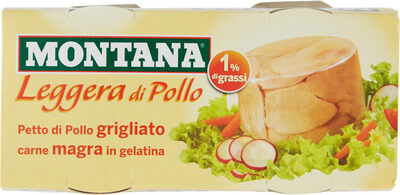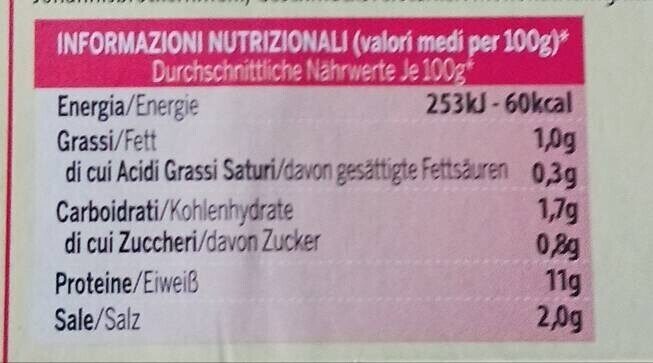Leggera di pollo - INALCA - 140 g
This product page is not complete. You can help to complete it by editing it and adding more data from the photos we have, or by taking more photos using the app for Android or iPhone/iPad. Thank you!
×
Barcode: 8000250995769 (EAN / EAN-13)
Common name: Carne in scatola
Quantity: 140 g
Packaging: Box
Brands: INALCA
Categories: Canned foods, Meats and their products, Meats, Canned meats
Labels, certifications, awards: No preservatives, it:Basso contenuto di grasso
Traceability code: IT 236 L CE
Stores: Conad
Matching with your preferences
Environment
Packaging
Transportation
Report a problem
Data sources
Product added on by uovosodo
Last edit of product page on by kiliweb.
Product page also edited by openfoodfacts-contributors, roboto-app, yuka.YUlJaUhMOWRwNllidk5zZTVRTHIzTXRYNEkvNFhUS2JOTTFOSVE9PQ, yuka.sY2b0xO6T85zoF3NwEKvlkpKafjcs26cGhPUnEGG4uipDLmwWoB8vq_UEqs, yuka.sY2b0xO6T85zoF3NwEKvlnEbDPfbu2rYDBrUk1eMz-6-Hr3SMfEj3NHiGKs.










